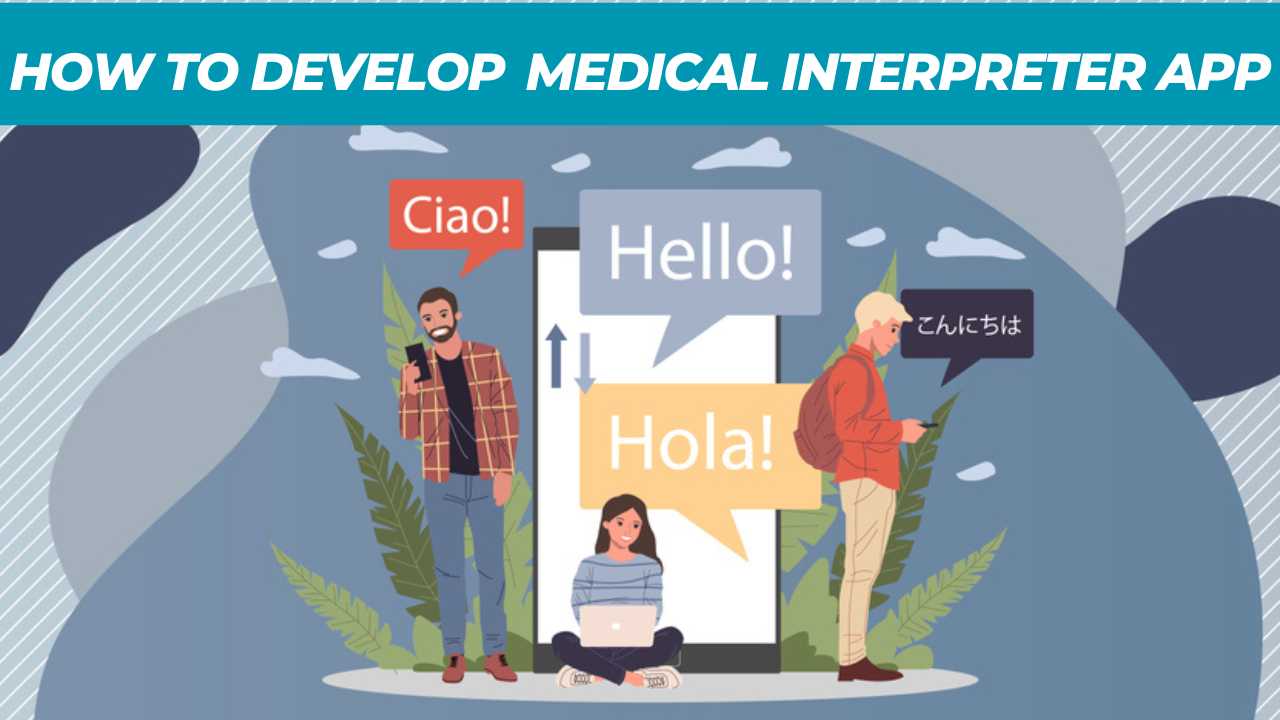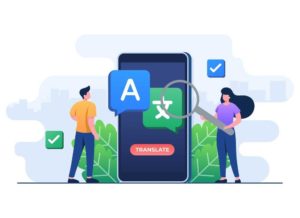Language barriers can often hinder patient-doctor interactions, leading to misunderstandings and potential medical errors. To bridge this gap, medical interpreter apps have emerged as a powerful solution. These apps allow healthcare professionals and patients to communicate seamlessly, regardless of language differences. So, let’s dive in and see how to develop a medical interpreter app.
Understanding the Purpose and Scope
Before diving into the app development process, it’s crucial to comprehend the purpose and scope of the medical interpreter app.
The primary goal is to facilitate accurate and real-time translation of medical information between healthcare providers and patients who speak different languages. The app should be user-friendly, and reliable, and ensure patient data confidentiality.
Conducting Market Research
In the initial stages of development, thorough market research is essential. Identify existing medical interpreter apps and analyze their strengths and weaknesses.
This will help you understand the competition and identify unique selling points for your app. Additionally, gather feedback from potential users, medical professionals, and language experts to tailor the app’s features to meet their needs.
Defining App Features and Functionality

Based on the market research, outline the essential features and functionality of the medical interpreter app. These may include:
- Multilingual Support
- Real-time Translation
- Audio and Video Support
- Secure Data Transmission
- Offline Mode
1. Multilingual Support
The app should support a wide range of languages commonly encountered in healthcare settings. If you want your app to stand out, this is the policy you need to apply.
If your app is not targeting a number of languages it will not be able to get you a lot of customers. On the other hand, if the app is multi-lingual then it has the potential to get you customers from all over the US.
2. Real-time Translation
Ensure that the translation is instantaneous, enabling smooth and efficient communication during medical consultations.
If the app is not fast enough it is almost useless. If you want your app to stand out from the crowd the app has to be fast in time of need. No one likes to wait around for a slow-loading app.
3. Audio and Video Support
Integrate audio and video capabilities to facilitate both spoken and sign language interpretations.
This can be a plus in your medical interpreter app. If it supports both audio and video it would be much easier for people to communicate with the doctor. Writing documents and then translating them is a time taking and frustrating experience.
On the other hand, voice and video support is much easier to use and less time consuming.
4. Secure Data Transmission
Implement robust security measures to protect patient data and comply with privacy regulations. People are very sensitive about their privacy and if they feel that their private date is not protected then they won’t use the app.
Moreover, leaking of private data is also considered a crime and if your app is doing that, the authorities can punish you. So, privacy is both good for your customer and the future of your app as far as the laws are concerned.
5. Offline Mode
Include an offline mode to accommodate users in areas with limited internet connectivity. This is one of the most important aspect of the app.
There are a huge number of areas where either internet connection is slow or internet breakdowns are frequent. In order to provide efficient services to all those places the app needs to have an ofline version as well.
Selecting the Right Technology Stack

Choosing the appropriate technology stack is vital to ensure the app’s performance and scalability. Consider factors such as app compatibility, development time, and ease of maintenance.
Some popular choices for medical interpreter apps include React Native, Flutter, or native development for Android and iOS platforms.
Designing the User Interface
An intuitive and user-friendly interface is critical for the success of the medical interpreter app. Collaborate with UI/UX designers to create a layout that promotes easy navigation and quick access to essential features.
Use clear and concise icons and labels to guide users through the app. If your app is not easy to navigate then it is very unlikely to succeed. So, it is very important to develop an app that is engaging and easy to navigate as well.
Development and Testing

With the design in place, the development phase begins. Work with experienced app developers who specialize in language processing and translation.
Frequent testing throughout the development process is essential to identify and rectify any bugs or glitches that may arise. The development phase is important beacause here you decide what your app is going to look like and how it will work.
Obtaining Legal Compliance
Medical interpreter apps handle sensitive patient information, making legal compliance a top priority.
Ensure that the app complies with data protection laws such as HIPAA and GDPR. Additionally, establish agreements with healthcare institutions to ensure proper usage and data handling.
For the app you are about to lauch or have already launched you need to make sure that it is in compliance with the laws of the country where it is going to operate.
Launch and Marketing

After thorough testing and legal compliance, it’s time to launch the app. Create a compelling marketing strategy to reach the target audience, including healthcare professionals, patients, and medical institutions.
Utilize social media, online advertisements, and partnerships with healthcare organizations to promote the app effectively. There are hundreds of such apps out there and if you want yours to stand out, good marketing is very important.
User Feedback and Improvements
Encourage users to provide feedback on their experience with the medical interpreter app. Take note of suggestions and areas for improvement.
Continuous updates and enhancements based on user feedback will ensure that the app remains relevant and effective. There must be a visible review section within your website.
Do not just focus on the positive comments also look at the negatve ones and try to improve things accordingly. Try to reply to as many reviews as possible. This will make sure that people who are giving their opinion are given the desired attention.
Conclusion
Developing a medical interpreter app can significantly improve communication and patient care in healthcare settings. By combining advanced technology, user-centric design, and legal compliance, you can create an app that revolutionizes the way medical information is exchanged across language barriers.
FAQs
A medical interpreter app is a mobile application that enables real-time translation of medical information between healthcare providers and patients who speak different languages.
A medical document translator app is a mobile application designed to translate medical documents, such as reports, prescriptions, and patient records, into different languages.
- Speak clearly and at a moderate pace.
- Avoid using jargon or complex medical terms.
- Allow time for the interpreter to convey the message accurately.
Translation software for hospitals is a specialized tool that facilitates communication between healthcare professionals and patients who speak different languages, ensuring accurate and efficient medical interactions.







